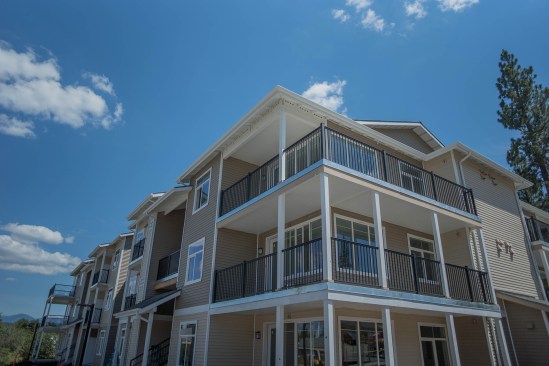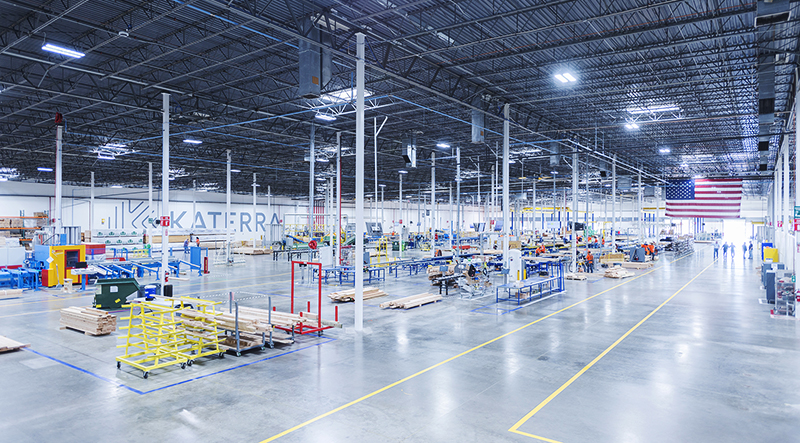Trevor Schick can’t stop the urge. “Whenever I walk by a construction site, I look in their Dumpster,” the former Hewlett-Packard executive in Silicon Valley admits. “Fifteen percent of the wood from a job site is thrown away! In a factory, if we’re not down to 2%, you’d get a better guy to run that factory. It’s the inefficiency of the [construction] industry that makes you really open your mind. I come home every night with 10 new things to go after. My head is spinning.”
Schick’s indignation wouldn’t matter but for the fact that he basically regards you as part of construction’s problem and his employer as part of the solution. Schick oversees the materials, construction, and renovation parts of Katerra, a fast-growing company led by Tesla’s former interim CEO that thinks it can disrupt much of how American residential construction operates.
Investors think so, too. In January, the SoftBank Vision Fund led a fund-raising effort that poured another $865 million into the 3-year-old company.

Trevor Schick
Just as Apple controls everything from design to manufacturing, Katerra basically aims to provide turnkey service from initial sketches to the final punch list. Its 1,300 employees include 100 architects, plus many more workers at a plant in Phoenix that produces wall panels, trusses, doors, and most other parts of a structure. Schick figures he can deliver manufactured components to sites up to 1,400 miles away, but the plan is to construct six factories in locations that would put them within 500 miles of 90% of the U.S. population.
That’s not all. Katerra brochures promote the company’s offerings in labor management, renovation services, and—most pertinent for construction products dealers—direct material sales. Currently, that latter effort pretty much means Katerra wants to sell stuff it brings in from Asia (the company has an office in Shenzen, China) plus what it makes at its factory. But soon it also will be offering cross-laminated timber produced at a mill it’s building near Spokane, Wash.
Currently, Katerra is peddling products to some West Coast clients via a distribution center in Long Beach, Calif. Schick says the customers are big builders and renovators. “We’re not trying to sell one faucet to a person,” he says. “It’s mostly into large projects that are being done. The sales team goes out and prices cabinets, countertops, fixtures.
“You really think about it as a scale play,” he adds. “I’ve got scale from [sales to] new building or renovation. If I’m going to buy 10,000 or 12,000 items for my container, [what I sell to others] ride over for free.” His next targets for distribution centers will be in Texas, South Carolina, and Pennsylvania, with facilities that typically will be tied to production factories.

One of Katerra's completed projects
Katerra says it has accumulated more than $1.3 billion in bookings. Most of that has been in multifamily construction, where Phoenix-based Wolff Co. primed the pump by engaging Katerra to build as many as a dozen apartment complexes. Student housing and hospitality appear to be the next construction sectors Katerra will embrace, given how similar the accoutrements are likely to be in each.
Those sectors also come closest to how tech companies operate. “I come from the electronics industry—HP, Apple—where scale is so important,” Schick says. “We have a joke around here that ‘every single building is a new building.’ If you build something, it’s not a prototype for mass production. You buy lumber for one set of buildings and then buy lumber for another set of buildings. In my world, you would find the best suppliers and then do the hand-off.”
But Katerra aims to overcome those differences. “For us, it’s all about vertical integration and the value chain,” he says. As a result, Schick says, his Katerra experience has involved embracing “a whole different model” from the status quo for construction and construction supply, starting with such issues as how to design components so you can fit as many items as possible on a truck.
“We had to get people from the industry who’ll say ‘I don’t like the way things are today,’” Schick says.
For instance, why build on site when factory production yields higher quality and cheaper costs, even after factoring in transportation? “You’re taking labor from a site and doing it in a factory and gaining efficiency,” he says. “My panels are going out now with the framing and windows installed, rough plumbing and all electrical.”
Meanwhile, “by being able to offer a lower cost, developers can do more projects,” Schick adds. “Speed in multifamily, student, and hospitality is critical. [Going] faster is a big piece of the puzzle [for developers]. Their costs are going down. A loan that would take 12 months now take six. … If they can rent it six months faster, they get revenue faster.”
As for sourcing, some builders and many dealers have issues with Chinese products. Schick says what Katerra buys is different.
“I’ve been doing business in China for 20 years, he says. “What I learned in electronics is that you need a team of people sitting there. My office is half people doing sourcing. The other half is quality people. I don’t have a desk for them in my office. They live in the factories. We’re making sure we help them on continuous improvement because, at the end of the day, quality is the most important thing. The iPhone is made in China. People think you can’t make a faucet but can make an iPhone?”
This story originally appeared in our sister brand ProSales.
